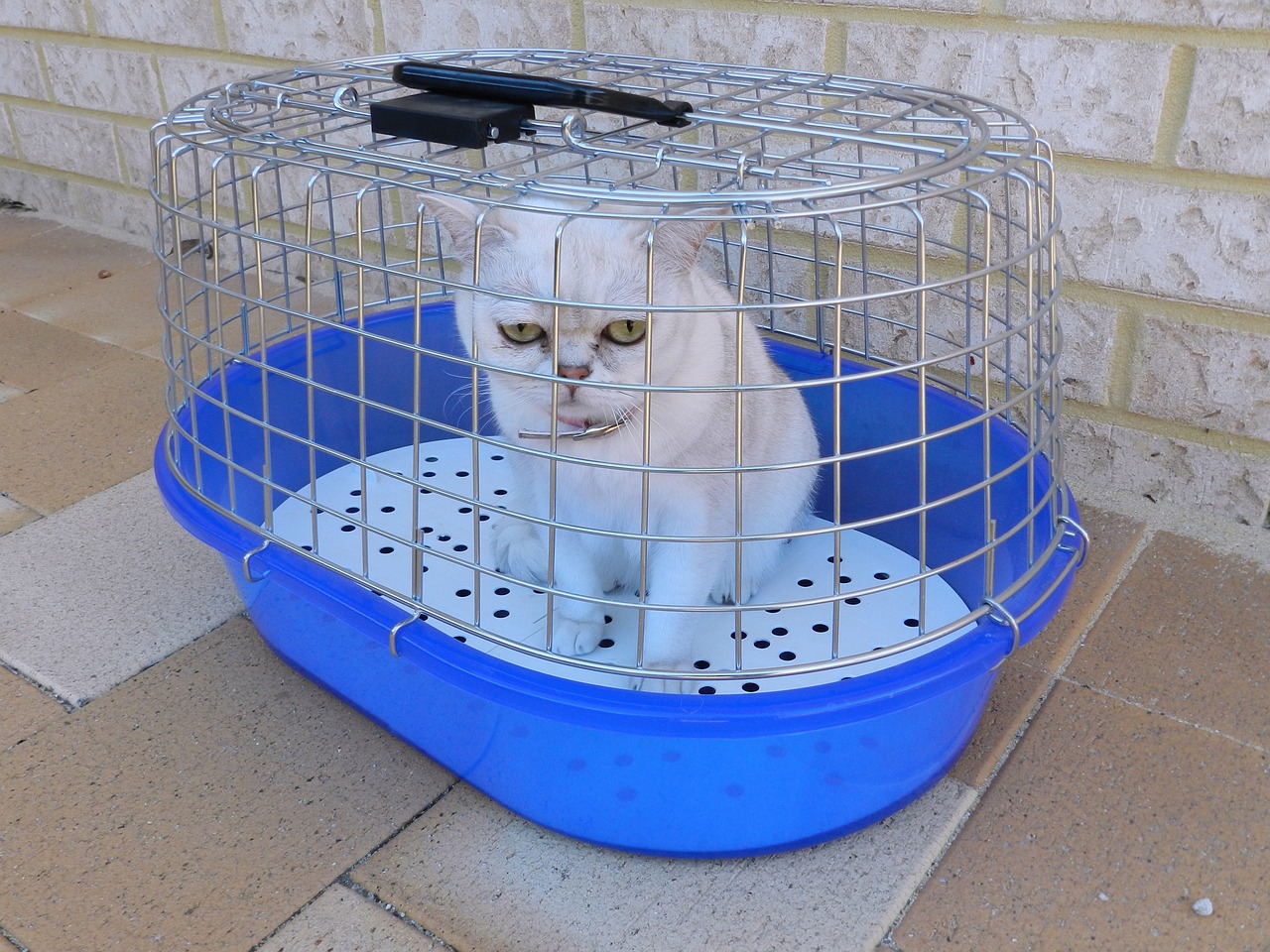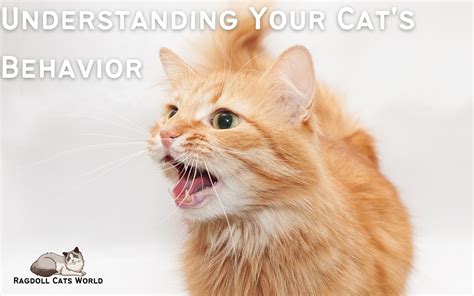Learn how to improve communication with your cat through body language, trust-building, consistent routines, and positive reinforcement, fostering a deeper bond together.Cats are more than just pets; they are cherished companions that contribute to our lives in countless ways. However, establishing a trusting and affectionate relationship with your feline friend can sometimes feel challenging. In “Nurturing the Bond with Your Cat: Building Trust and Affection,” we delve into the essential strategies for strengthening this unique connection. From understanding your cat’s subtle body language to creating a safe environment and implementing consistent daily routines, every element plays a vital role in fostering a nurturing bond. With the power of positive reinforcement and the ability to recognize signs of trust and affection, you can transform your relationship with your cat. Join us as we explore these key aspects and embark on a journey toward a deeper, more fulfilling partnership with your furry friend.
Understanding Your Cat’s Body Language For Better Communication
To successfully build trust with cats, it’s essential to understand their body language. Cats communicate a wealth of emotions and intentions through their physical gestures, and by learning to interpret these signals, you can enhance your bond with your feline friend.
1. Tail Position
A cat’s tail is a key indicator of its mood. A straight-up tail with a slight curve at the tip often signals happiness and confidence. Conversely, a puffed-up tail suggests that the cat is frightened or agitated. Observing these tail movements can greatly increase your understanding of your cat’s emotional state.
2. Ear Movements
Cat ears are highly flexible and can express various feelings. Forward-facing ears usually indicate curiosity or excitement, while ears turned sideways or back can suggest irritation or fear. Paying attention to these cues can help you respond appropriately to your cat’s needs.
3. Eye Contact
Slow blinking is a sign of trust and affection among cats. If your cat looks at you and slowly closes its eyes, it is essentially giving you a feline kiss. You can reciprocate by doing the same, further promoting trust and strengthening your bond.
4. Whisker Position
Whiskers are not just for measuring spaces; they can also reflect a cat’s mood. Whiskers that are relaxed and pointed forward indicate comfort and curiosity. In contrast, whiskers that are pulled back can suggest fear or aggression. Observing these nuances can guide your interactions towards nurturing trust.
5. Body Posture
A relaxed body posture signals a happy and comfortable cat, while a crouched position might mean the cat is scared or defensive. If your cat approaches you with a relaxed stance, it’s a good sign that your efforts in building trust with cats are paying off.
By being attentive to these behaviors, you can create an environment that promotes communication and helps foster a deeper, more trusting relationship with your cat. Understanding their body language is a vital step in your journey to cultivate that affectionate bond.
Creating a Safe Environment to Encourage Trust Building
Creating a safe environment is essential in the process of building trust with cats. Cats are naturally curious creatures, but they can also be quite sensitive and easily stressed by their surroundings. Here are some key considerations for ensuring that your cat feels secure:
- Designate a Quiet Space: Provide a separate area in your home where your cat can retreat to feel safe and secure. A cozy bed, away from noise and foot traffic, can help them relax.
- Avoid Sudden Changes: Cats thrive on routine. If you plan to make changes to your home, do so gradually to prevent stressing your cat.
- Protect From Hazards: Ensure your home is cat-proofed by removing any toxic plants, ensuring windows are secure, and keeping any small objects out of reach. This minimizes the potential for accidents and provides peace of mind for both you and your cat.
- Provide Access to Hiding Spots: Cats often feel safest in enclosed spaces. Having boxes, cat trees, or tunnels can help them feel more in control of their environment.
- Use Calming Products: Consider using pheromone diffusers or calming sprays designed for cats. These can help create a tranquil atmosphere conducive to building trust with cats.
By taking these steps to create a safe environment, you foster a sense of security that is crucial in establishing trust and affection in your relationship with your cat. A secure space not only encourages your cat to explore their surroundings but also opens the door to deeper emotional connections.
Building Trust With Cats Through Consistent Daily Routines
Establishing a sense of predictability in your cat’s life is essential for building trust with cats. Cats are creatures of habit, and a consistent daily routine helps them feel secure and comfortable in their environment. Here are some key aspects to consider:
- Feeding Schedule: Try to feed your cat at the same time every day. This not only helps your cat anticipate mealtime, but it also creates a sense of reliability. Using a specific feeding area can also enhance this routine.
- Playtime: Regular play sessions contribute to a cat’s happiness and help strengthen the bond between you. Set aside time each day dedicated to playing with your cat using their favorite toys. This consistency not only builds trust but also encourages a playful relationship.
- Grooming: Incorporate daily grooming sessions into your routine. Cats usually appreciate being brushed, and this practice can reinforce their trust in you, especially if they are not used to it. Always reward positive behaviors during these sessions.
- Interaction: Regularly engage with your cat through gentle talking and soothing strokes. Your consistent presence will comfort your pet, which is essential in building trust with cats.
- Consistent Environment: Keep their living space organized and free from clutter. A stable environment will help your cat thrive and contribute to their overall well-being and trust in you.
By incorporating these daily routines, you foster an environment of safety and predictability, which is key in nurturing the bond and building trust with cats. Remember, patience is essential; it might take time for your cat to fully trust you, but your consistent efforts will eventually pay off.
Using Positive Reinforcement to Strengthen Your Relationship
One of the most effective methods for building trust with cats is through the use of positive reinforcement. This technique involves rewarding desired behaviors with treats, praise, or playtime, which encourages your cat to repeat those behaviors.
Here’s how you can implement positive reinforcement to enhance your bond:
By consistently rewarding positive behavior, not only are you building trust with cats, but you are also reinforcing a positive connection that encourages them to engage more with you. Over time, this practice will lead to a more trusting and affectionate relationship between you and your feline companion.
Recognizing Signs of Trust and Affection in Your Cat
Recognizing when your cat trusts you can significantly enhance your bond and improve the process of building trust with cats. Cats may not communicate their feelings as openly as dogs, but they do exhibit several signs that indicate they feel safe and loved in their environment. Here are some key indicators to look out for:
- Slow Blinking: If your cat looks at you and slowly closes their eyes, it’s a sign of trust and affection. You can return this gesture to strengthen your bond.
- Purring: While cats can purr for numerous reasons, a gentle purr while sitting near you usually indicates comfort and happiness.
- Head Butting: When your cat rubs its head against you, it’s marking you with its scent, which signifies affection and a desire to bond.
- Exposing Belly: When a cat rolls over and shows its belly, it’s a vulnerable position that indicates trust. However, be cautious, as some cats may still prefer not to be touched in this area.
- Following You: If your cat follows you around the house, it’s a clear sign they feel secure with you and want to be part of whatever you are doing.
- Grooming: If your cat licks you or grooms you, they are showing affection, as grooming is a social behavior among cats.
By recognizing these signs, you can better understand your cat’s feelings and continue building trust with cats through positive interactions and shared experiences. The key is to be observant and responsive to these subtle cues so that your cat knows you appreciate their affection.
Frequently Asked Questions
Why is it important to build trust with your cat?
Building trust with your cat is essential for their emotional well-being and can lead to a stronger bond between you and your pet, making them feel safe and secure in their environment.
What are some effective ways to show affection to my cat?
You can show affection to your cat through gentle petting, playing interactive games, offering treats, and spending quality time together while respecting their comfort levels.
How can I tell if my cat trusts me?
Signs that your cat trusts you include purring, kneading, rubbing against you, following you around, and allowing you to handle them or pick them up without resistance.
What should I avoid doing to maintain my cat’s trust?
To maintain your cat’s trust, avoid loud noises, sudden movements, or forcing interactions. Scaring your cat can lead to breakdowns in trust and affection.
How can I help my cat feel more comfortable in new environments?
To help your cat feel comfortable in new environments, provide them with a safe space, introduce changes gradually, and use familiar items like bedding or toys to create a sense of security.
Is it beneficial to play with my cat? If so, how often?
Yes, playing with your cat is very beneficial as it stimulates their mind and body. Aim for at least 15-30 minutes of play each day, adjusting based on your cat’s energy level.
What role does socialization play in developing trust with my cat?
Socialization is crucial for developing trust with your cat, as it exposes them to different people, environments, and experiences, helping them to feel more secure and confident.











